Basilicata, also known as Lucania, is nestled between Puglia, Campania, and Calabria, making it a unique crossroads of culture and history in southern Italy. Known for its diverse landscape that comprises dense forests, rugged mountains, tranquil lakes, and pristine beaches, this lesser-explored region is an absolute delight for nature and history enthusiasts alike. While the unique city of Matera, the eerie ghost town of Craco, and the traditional Palmenti di Pietragalla are major highlights, Basilicata’s charm extends far beyond, promising an adventure at every turn.
Basilicata: An Uncharted Paradise
Basilicata boasts a fascinating range of attractions for tourists. Its dual coastlines offer stunning beaches and cliffside views, like those found at Maratea, often referred to as the “Pearl of the Tyrrhenian”. Here, a towering statue of Christ the Redeemer watches over the town, mimicking its famous counterpart in Rio de Janeiro.
The region is a haven for outdoor enthusiasts. The Dolomiti Lucane, Basilicata’s own ‘Dolomites,’ present a surreal mountainous landscape that invites trekkers and climbers for an unparalleled experience. Further, the lakes of Monticchio, located within the extinct Vulture volcano, provide enchanting scenery for a leisurely stroll or picnic.
Basilicata’s culinary scene is as enticing as its landscapes. It is the land of the hearty peasant cuisine, where the authentic flavors of homemade pasta, bread, cheeses, and local wines, such as the renowned Aglianico del Vulture, come to the forefront.
Matera: A City Carved in Stone

Matera, the “city of stones,” is a testament to the resilience and ingenuity of human beings. The city is world-renowned for the Sassi di Matera – ancient cave dwellings that have been inhabited since the Paleolithic period. Walking through the Sassi is akin to stepping back in time; the winding, cobblestoned streets, arched alleyways, and stone-built homes provide a captivating blend of history and culture. Many of these dwellings have been transformed into boutique hotels, eateries, and shops, lending a modern twist to the prehistoric setting.
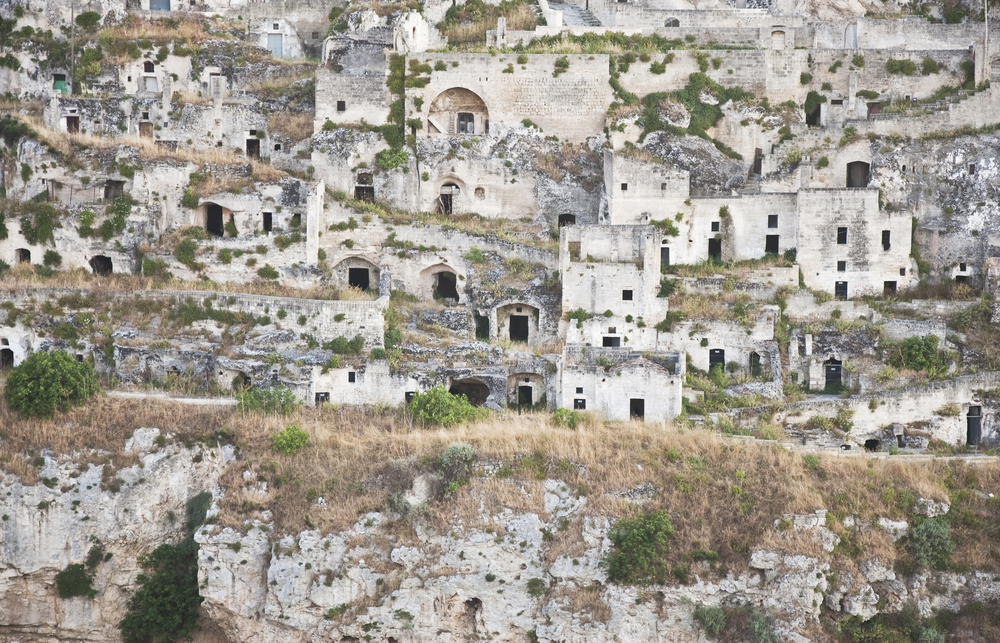
old caves called Sassi in Matera, Italy
The city’s architectural wonders don’t stop at the Sassi. Churches like the cathedral dedicated to the Madonna della Bruna and Sant’Eustachio, built between 1230 and 1270, exhibit remarkable Romanesque-Pugliese architecture. Notably, the rock-hewn churches scattered across Matera, with their Byzantine frescoes, offer a unique exploration of faith and artistry.
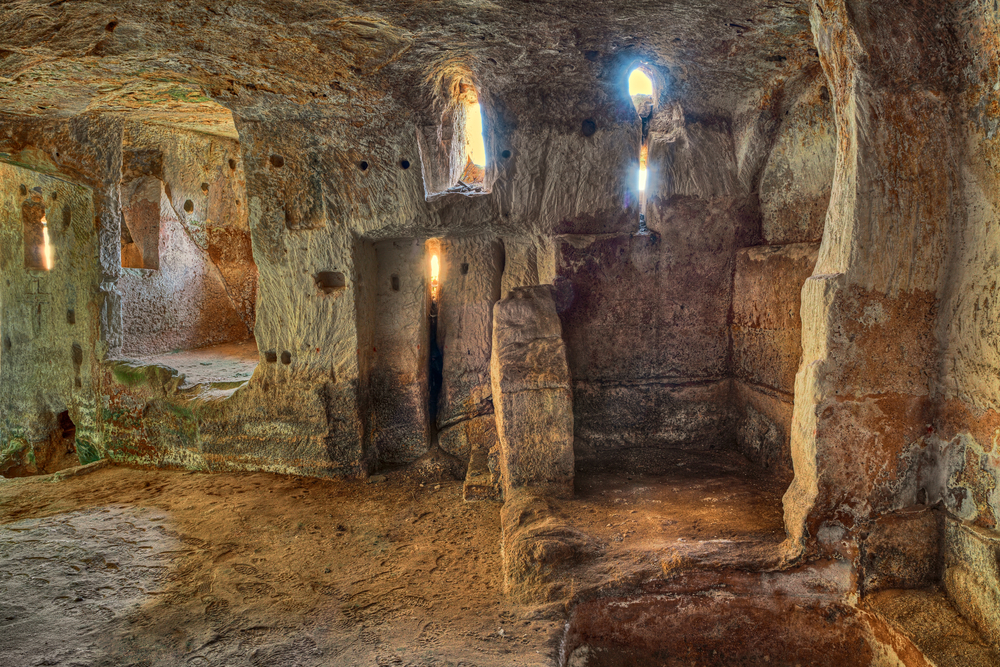
Matera, Basilicata, Italy: interior of an old cave house carved into the tufa rock in the old town (sassi di Matera)
In 1993, Matera gained global recognition when UNESCO declared its Sassi a World Heritage Site. This marked the Sassi di Matera as Italy’s sixth chronologically listed site and the first in the southern region of the country.
Adding another feather to its cap, Matera was also designated as the European Capital of Culture for the year 2019 on 2014. This title further testified to Matera’s rich cultural and historical significance and helped the city gain even wider recognition. This event also provided a platform for Matera to showcase its incredible architectural feats and cultural traditions to a wider European and global audience, further solidifying its status as a cultural gem within Italy and beyond.
Palmenti di Pietragalla: A Journey into Winemaking Traditions
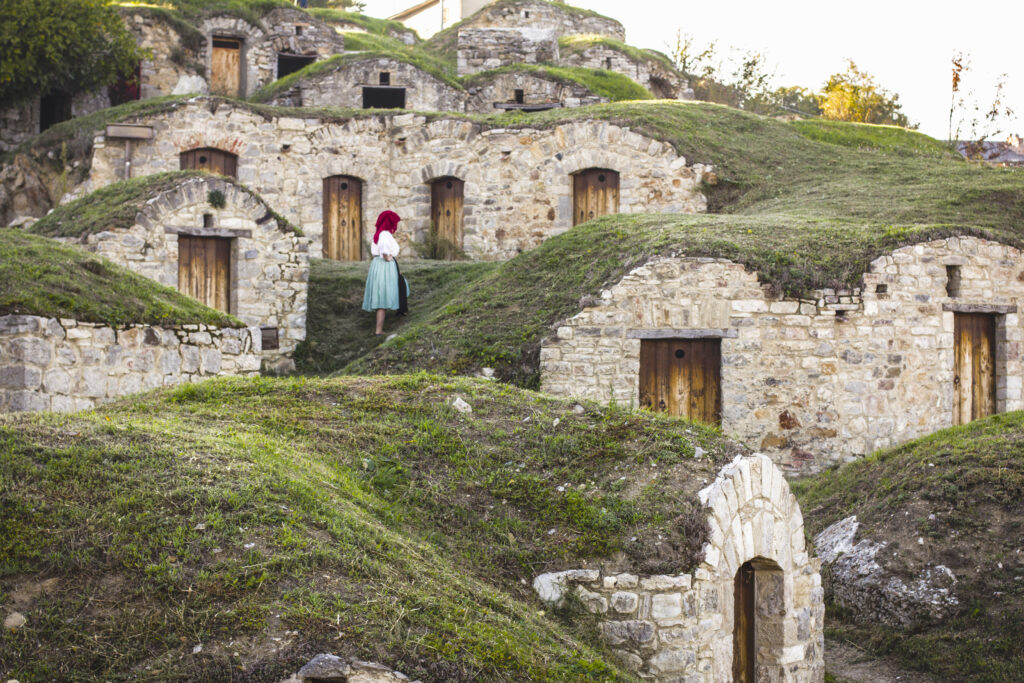
Alessia De Bonis, CC BY-SA 4.0 <https://creativecommons.org/licenses/by-sa/4.0>, via Wikimedia Commons
Basilicata is not just about cities and towns; it’s also home to some unique countryside architecture. Among these stand the Palmenti di Pietragalla, peculiar structures used in the past for wine production. Found throughout the rural landscape, these fascinating constructions bear silent witness to the age-old tradition of winemaking in the region.
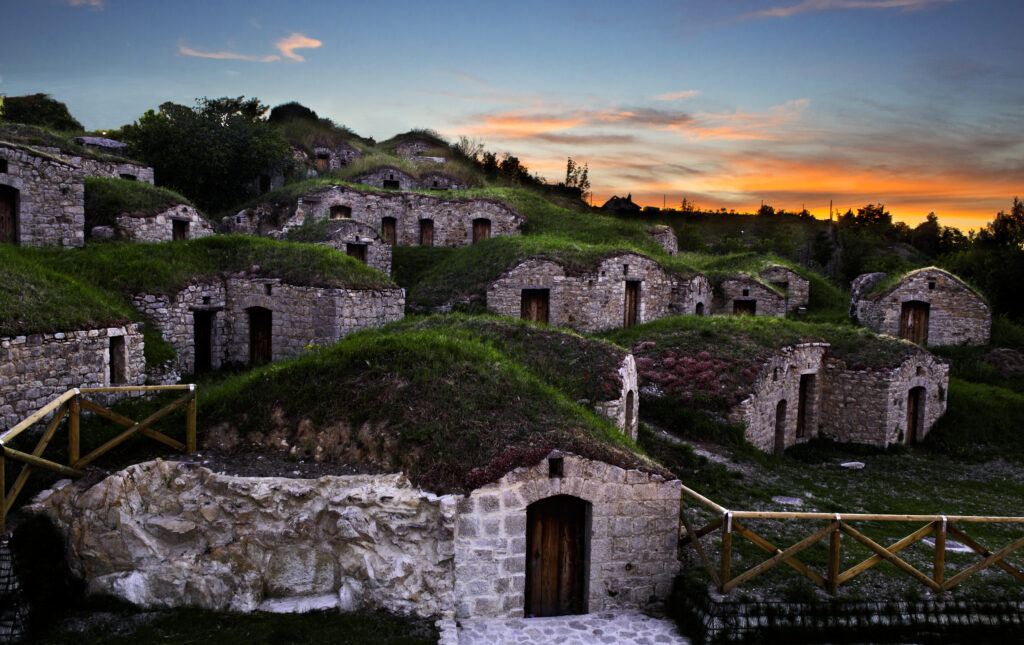
Mngon, CC BY-SA 4.0 <https://creativecommons.org/licenses/by-sa/4.0>, via Wikimedia Commons
Palmenti are essentially natural caves, hollowed out and sculpted over centuries, with specific sections for pressing grapes and collecting the must. Many of these structures have been preserved and offer a unique peek into the rustic, agrarian past of Basilicata. Visiting the Palmenti di Pietragalla is a must for wine lovers, where they can see firsthand how the rich, fertile lands of Basilicata have been cultivated for centuries to produce some of Italy’s finest wines.
Craco: The Echoes of a Ghost Town
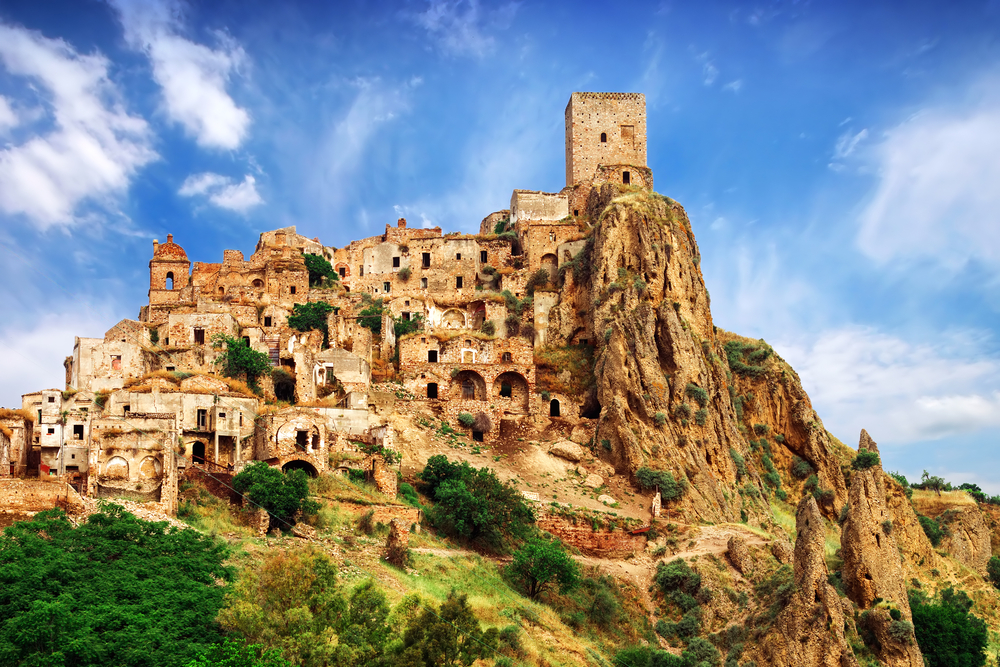
The abandoned village of Craco, Basilicata region, Italy
Craco, often termed as the ghost town of Basilicata, is a hauntingly beautiful testament to a bygone era. Once a bustling medieval town, Craco was abandoned following landslides and earthquakes in the 1960s. Today, it stands frozen in time, its winding, deserted streets, and empty buildings silently narrating a tale of past glory and abrupt desertion.
Craco’s architecture, though partly ruined, is impressive. Its Norman Tower, built around 1040, still looms large over the skeletal town. The town’s church, Santa Maria della Stella, and the castle of Frederick II, perched on the hill’s peak, retain an eerie allure. Craco’s empty houses, clinging precariously to the cliff-side, evoke a poignant sense of the lives lived within their now-silent walls. Visiting Craco is a truly immersive experience, offering a unique understanding of the ephemeral nature of human settlements.
Basilicata is a captivating blend of ancient traditions, architectural marvels, stunning landscapes, and mouthwatering cuisine. As a region lesser known to the hordes of tourists, it provides an authentic, immersive Italian experience. Whether you’re tracing the footsteps of history in Matera, exploring the winemaking traditions in Pietragalla, or embracing the eerie silence of Craco, Basilicata promises a journey of discovery. So, take the road less traveled and prepare to be charmed by the irresistible allure of Basilicata. Let this be your next Italian escapade, far from the crowd, close to the heart.
